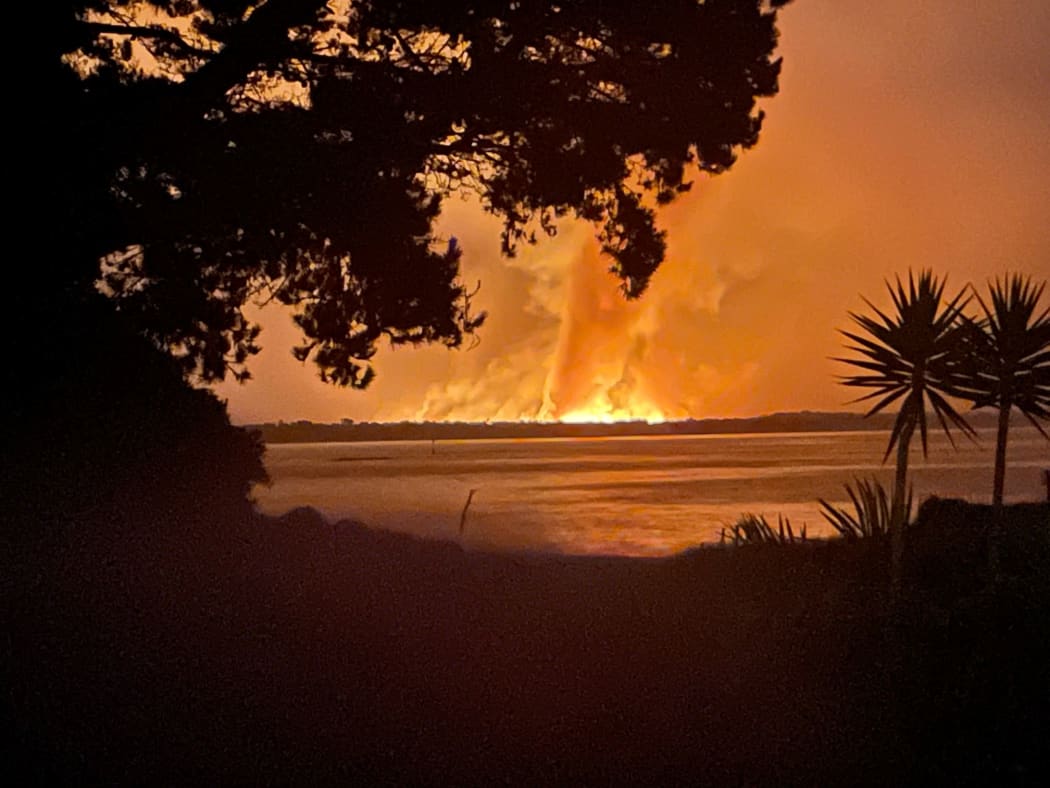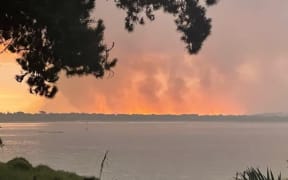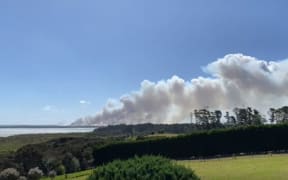The grass at Kaimaumau, in the Far North, is no longer green as a major fire enters its 20th day of burning.

Northland Kaimaumau fire as seen from Reef Lodge Motel in Rangiputa on 20 December 2021. Photo: Supplied / Reef Lodge Motel
Fire and Emergency incident controller John Sutton said unburnt grass that was green when the blaze started had since dried up.
He said that meant there was more land, particularly south of the fire, that was vulnerable to burning quickly.
"In the last week, we've had some really good, classic summer conditions with higher-temperature, lower-humidity, which has cured that grass."
The fire has burnt around 2400 hectares.
Sutton was confident the tide was turning on the fire but containment lines were not expected to be fully established for at least another week.
One challenge was winds blowing fire across the boundary, which resulted in resources having to be moved away from the main task.
The continued heat was a major challenge too: fiefighters get through a hot day to find the next is even hotter.
Sutton said there was not much shade on the fire ground so staff were being closely monitored for dehydration and fatigue.
Sutton said it was "arduous work, heavy-going" for firefighters on the fire ground, "particularly in the boggy areas", where temperatures had been into the 30s - more than five degrees hotter than at the incident control centre.
Weather forecasts showed the area could get some rain on Friday.
But Sutton said while they would "take any help they can get", it was unlikely to be enough to make a significant impact.
He also said the dirt tracks they were having to travel would become "quite slippery" with just a little bit of rain, which was "a downside".
There were also Defence Force and Department of Conservation personnel out in the field and at the table planning how to tackle the blaze, where members of the local iwi also sat.
Department of Conservation national fire manager Aroha Hughes said it was necessary because the fire covered a lot of culturally and ecologically important conservation land.
"We need to be present to make sure tactics that are being taken are as minimally invasive as possible."
Hughes said there were a lot of wāhi tapu sites in the area, like burial grounds but they were also concerned about orchids and mudfish species that were at critical levels.
"There's not only native species in there, but we've got some weedy species like your wattle and your hakea, which isn't supposed to be there - it's been brought by people."
Those plants "loved fire" and it meant the department would be "in a race" to make sure they did not take over the place in the aftermath, Hughes said. "If they do, that's where our species are going to be threatened more."






